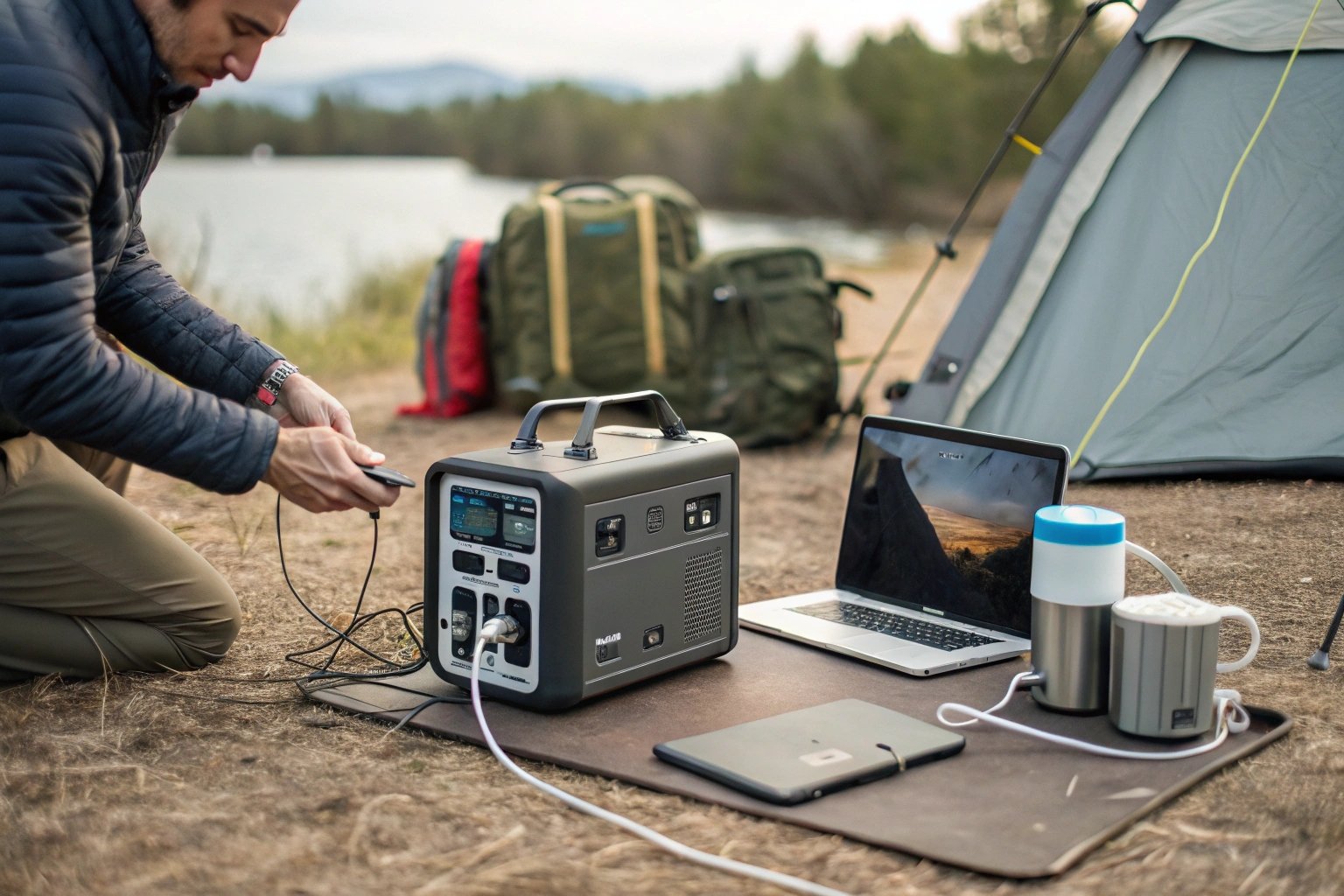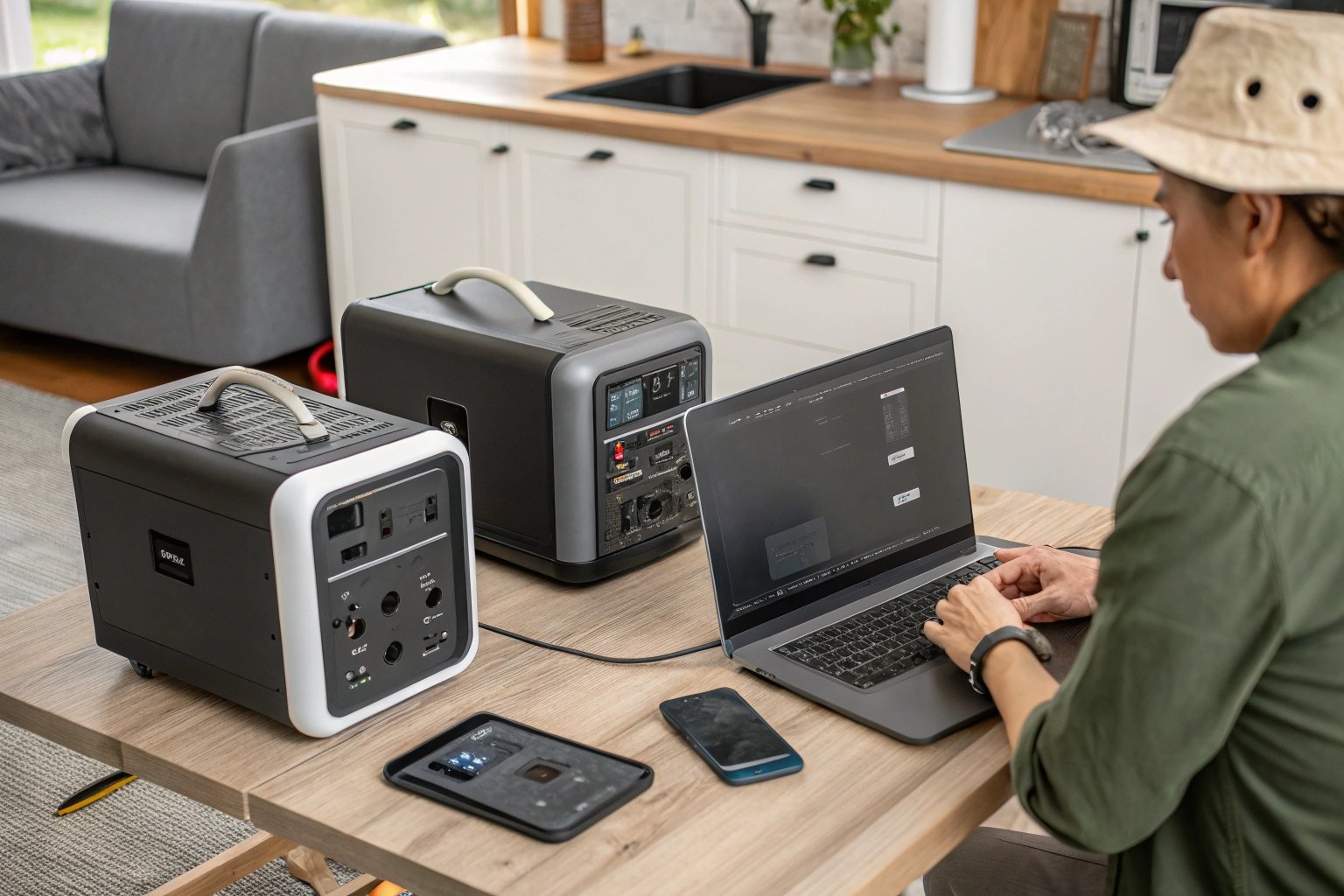When planning a camping trip, ensuring you have enough power to keep your devices charged and powered up can make a big difference. A portable power station is an essential tool for campers, offering energy solutions when you're away from traditional power sources.
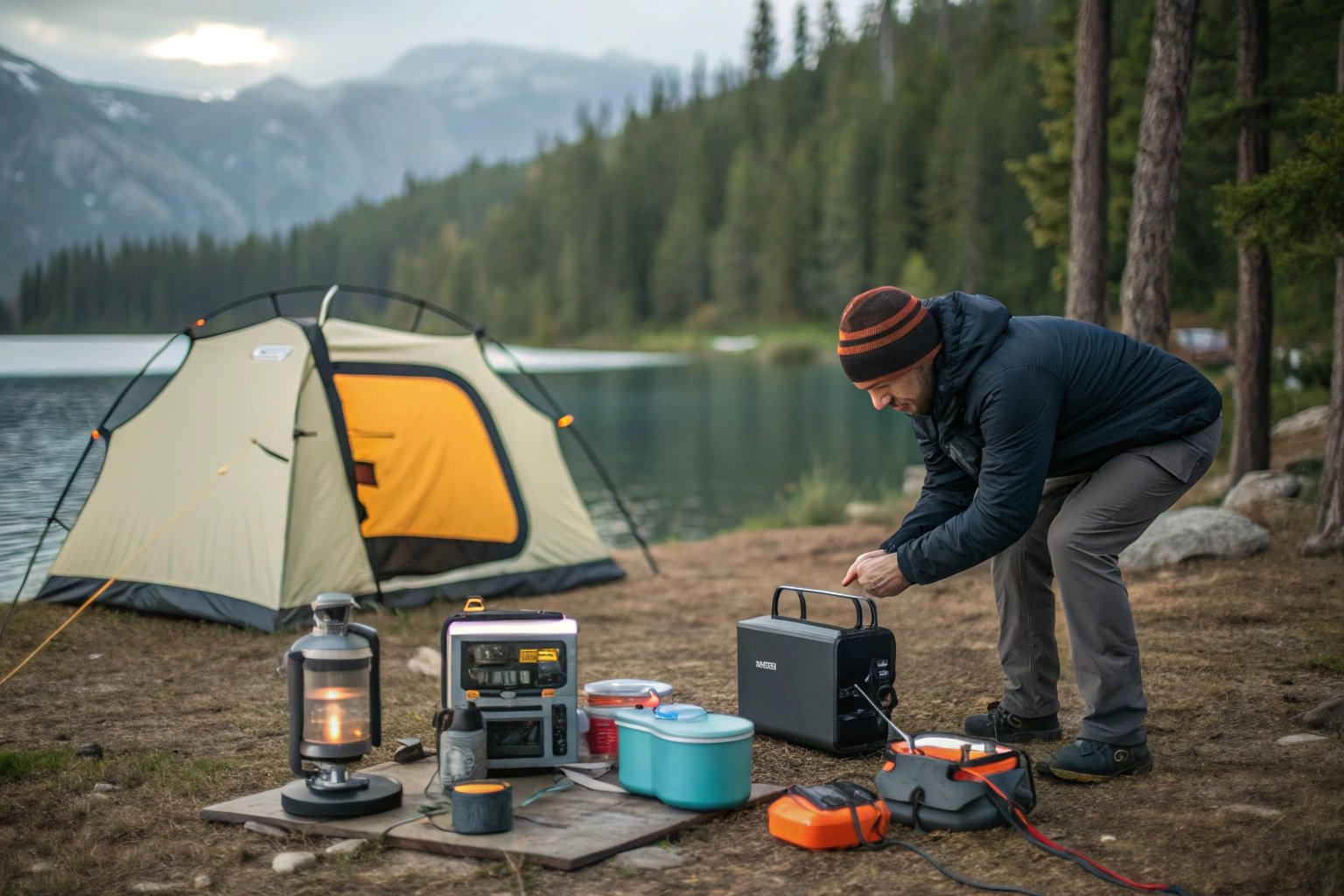
Choosing the right portable power station for camping involves understanding your power needs, battery capacity, portability, and additional features that suit outdoor use.
In this guide, we’ll walk you through the key factors to consider when selecting a portable power station for your next camping adventure.
Understand Your Power Needs
Before you start shopping for a portable power station, assess what devices you plan to charge or power while camping.
Knowing your power needs will help you choose a portable power station with the right capacity and features for your devices.
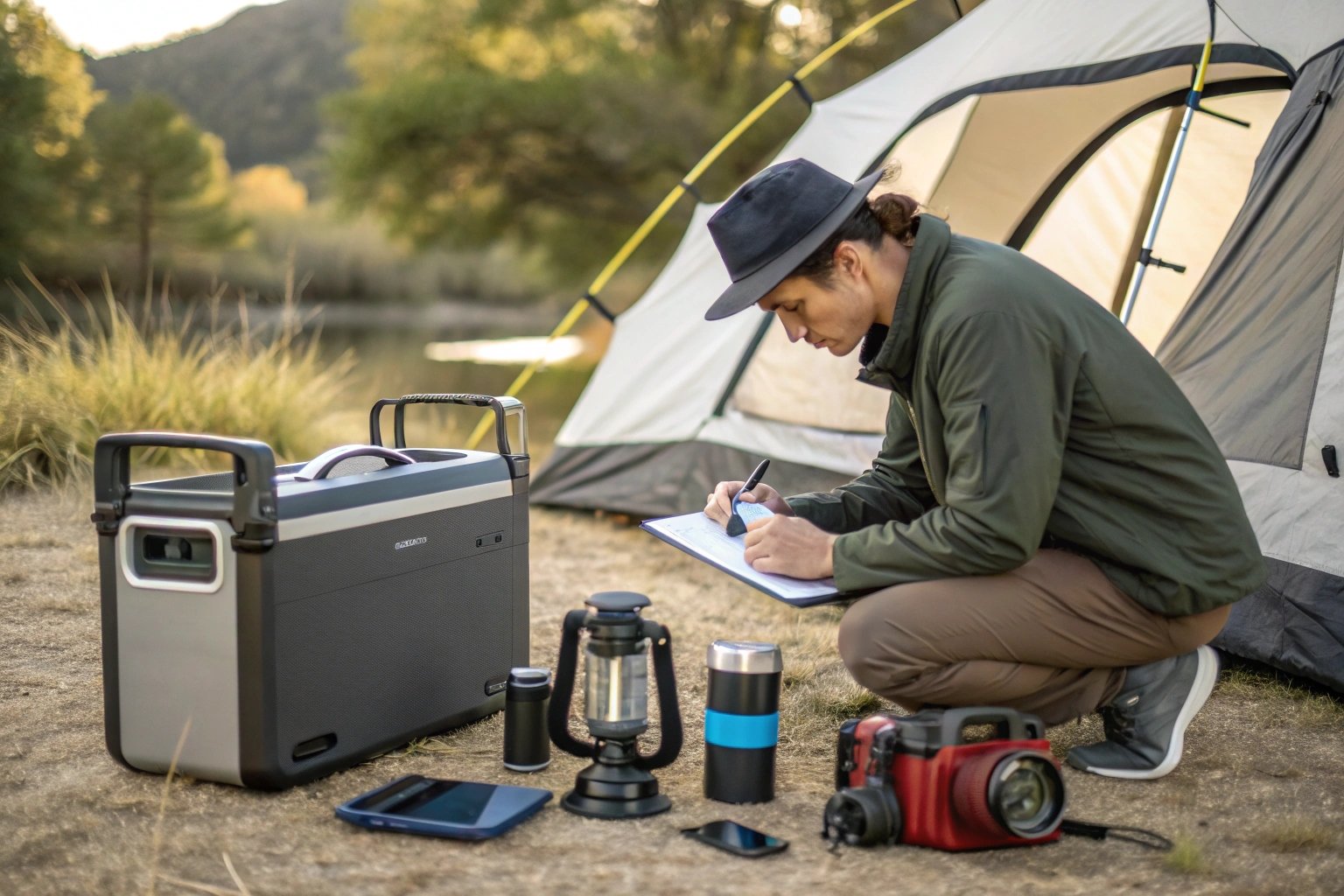
Devices to Power
- Small Devices: If you only need to power devices like smartphones, tablets, and small lights, a power station with a capacity between 200Wh to 500Wh should suffice.
- Larger Devices: For powering a laptop, mini-fridge, or larger electronics, you'll need a 1000Wh or more power station.
- Multiple Devices: Consider a power station with a higher wattage if you need to charge or power multiple devices at once, such as phones, cameras, and a small cooler.
Calculate Total Wattage
Check the wattage of your devices and calculate the total energy consumption. This will help you determine the appropriate power station size. For instance:
- Smartphone: 10W
- Laptop: 50W
- LED lights: 10W
Add up the total wattage for the devices you plan to use simultaneously, then choose a power station that can handle that load with extra capacity for safety.
Battery Capacity and Runtime
The battery capacity of the portable power station is measured in watt-hours (Wh). The larger the capacity, the more devices it can power for a longer period.
Look for a portable power station with enough capacity to power your devices for the duration of your trip.

Estimating Battery Life
Battery life depends on both the capacity of the power station and the power consumption of your devices. Here’s how to estimate it:
- A 500Wh power station could power a 50W device for approximately 10 hours (500Wh ÷ 50W = 10 hours).
- A 1000Wh power station could power the same device for 20 hours (1000Wh ÷ 50W = 20 hours).
For typical camping trips, a 500Wh to 1000Wh power station is usually sufficient to keep devices charged for 1-2 days, depending on usage.
Output Ports and Versatility
The types and number of output ports will determine which devices you can power with your portable power station.
Look for a power station with a variety of output ports to cover your charging needs.
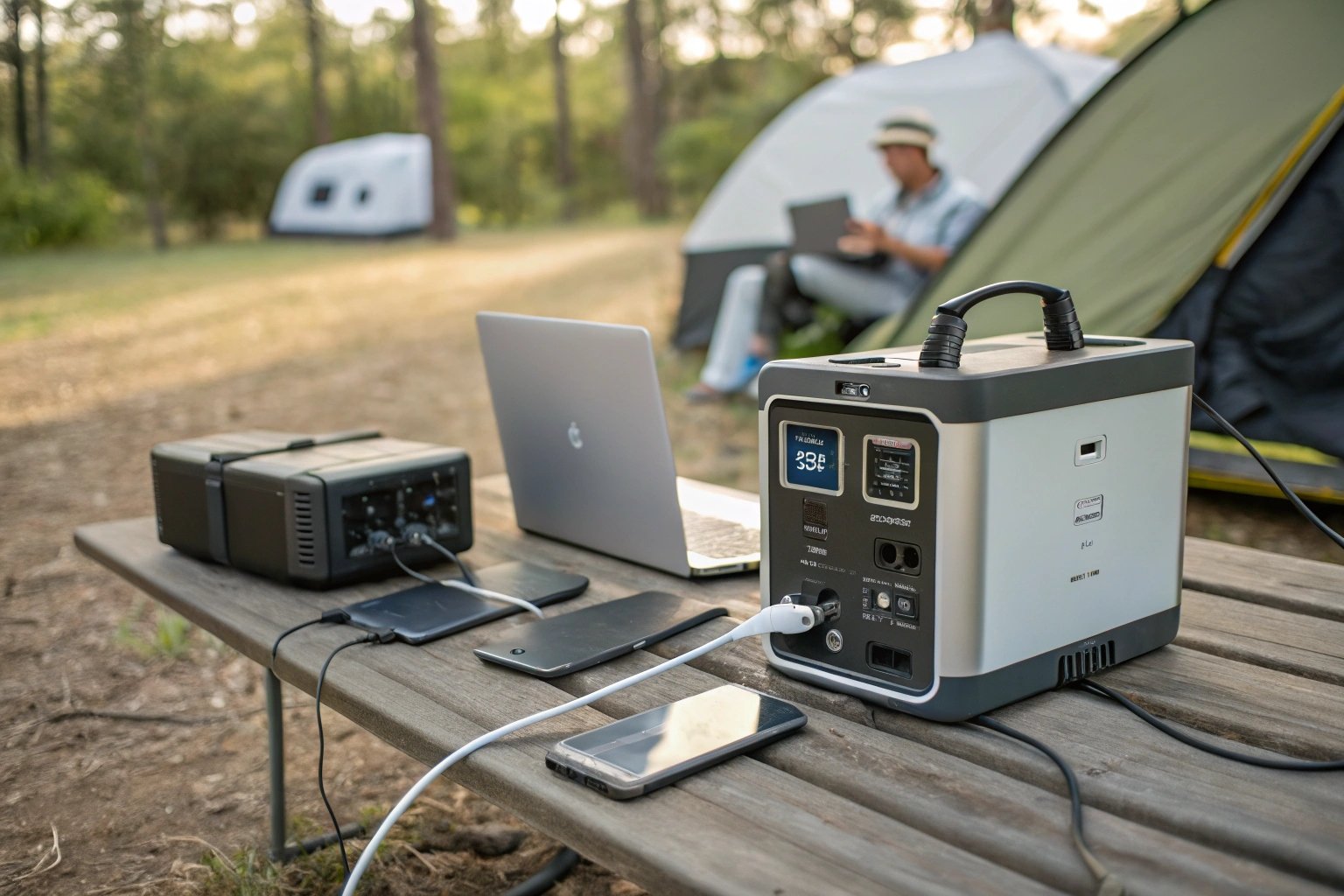
Output Options
AC outlets: Ideal for charging larger devices like laptops, mini-fridges, or power tools. Ensure the power station has enough AC outlets to accommodate your devices.
USB ports: Great for charging phones, tablets, and small electronics. Some power stations come with USB-C ports for faster charging.
DC carports: Useful for powering 12V devices like portable coolers, car fans, or other camping gear.
A combination of AC, USB, and DC outputs will offer versatility, allowing you to power a variety of devices simultaneously.
Durability and Weather Resistance
Since you’ll be using the power station outdoors, durability and weather resistance are essential to ensure it performs reliably in harsh environments. Whether it's rain, dust, or extreme temperatures, a well-built power station will continue to function without issue. Choose a unit specifically designed for outdoor use to avoid unexpected failures during your trip.
When selecting a camping power station, look for models with a strong IP rating, ideally IP65 or higher, to protect against dust and water. A rugged casing is also important—it should withstand impact, drops, and rough handling. These design features are key to ensuring your power station survives the elements and keeps your devices powered throughout your adventure.
Conclusion
Choosing the right portable power station for camping requires evaluating your power needs, the types of devices you plan to use, and the features that are important for your trip. By considering capacity, portability, recharge options, and durability, you can find a power station that will keep your devices powered up throughout your adventure, ensuring a smooth and enjoyable camping experience.

